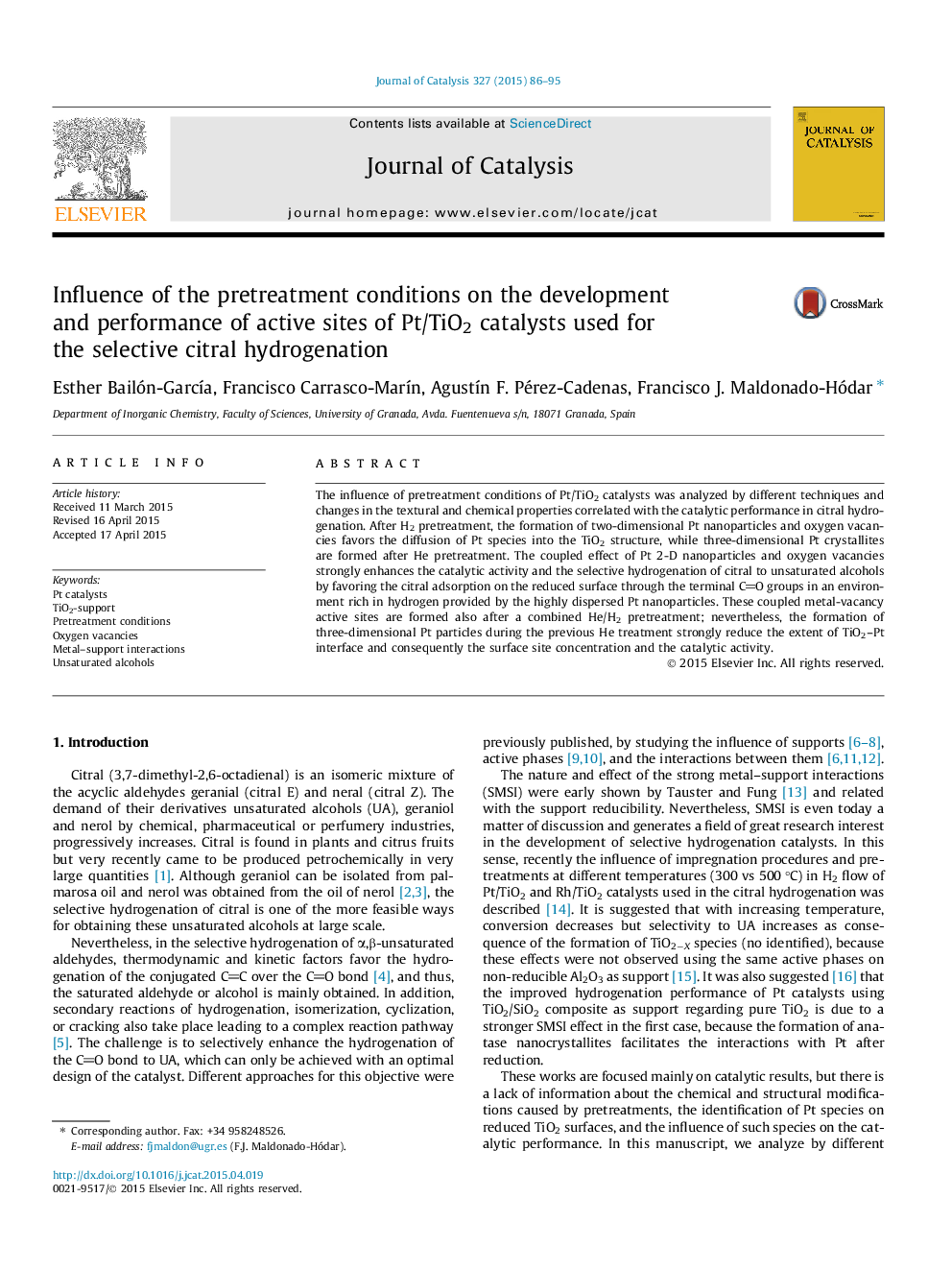| Article ID | Journal | Published Year | Pages | File Type |
|---|---|---|---|---|
| 60750 | Journal of Catalysis | 2015 | 10 Pages |
•Pretreatment conditions determine the performance of Pt/TiO2 catalysts.•Pretreatment in H2 flow enhances both activity and selectivity.•The stronger Pt sintering occurs in He flow, leading to a low performance.•H2 pretreatment induces the formation of oxygen vacancies and Pt nanoparticles.•Active and selective sites for citral hydrogenation are formed during H2 pretreatment.
The influence of pretreatment conditions of Pt/TiO2 catalysts was analyzed by different techniques and changes in the textural and chemical properties correlated with the catalytic performance in citral hydrogenation. After H2 pretreatment, the formation of two-dimensional Pt nanoparticles and oxygen vacancies favors the diffusion of Pt species into the TiO2 structure, while three-dimensional Pt crystallites are formed after He pretreatment. The coupled effect of Pt 2-D nanoparticles and oxygen vacancies strongly enhances the catalytic activity and the selective hydrogenation of citral to unsaturated alcohols by favoring the citral adsorption on the reduced surface through the terminal CO groups in an environment rich in hydrogen provided by the highly dispersed Pt nanoparticles. These coupled metal-vacancy active sites are formed also after a combined He/H2 pretreatment; nevertheless, the formation of three-dimensional Pt particles during the previous He treatment strongly reduce the extent of TiO2–Pt interface and consequently the surface site concentration and the catalytic activity.
Graphical abstractFigure optionsDownload full-size imageDownload high-quality image (207 K)Download as PowerPoint slide
